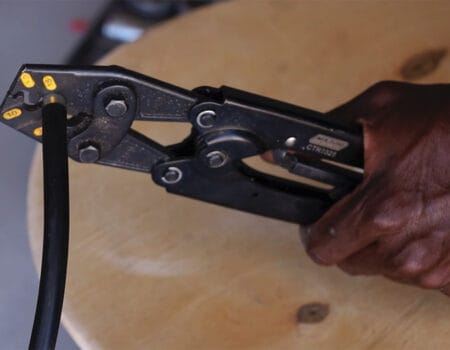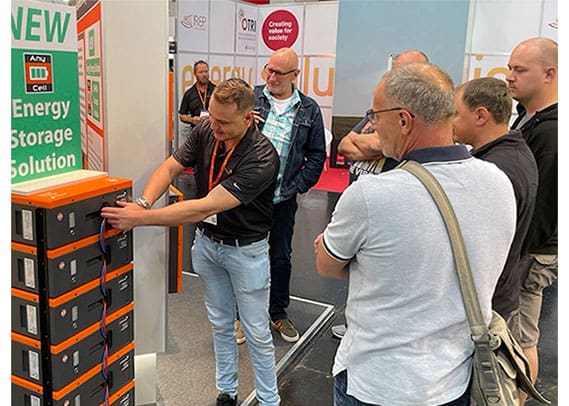
Whether someone is a DIY enthusiast or a 30-year veteran in solar, the fact remains safety is one of the most important things to keep in mind when designing and installing solar solutions.
Electricity should be respected to ensure all involved during installation, inspection and equipment usage are not in danger of getting injured or worse. This idea is also important to protect the investment of the equipment and housing at the installation site. There are photovoltaic safety rules one must follow that can minimize risk to injury for electric shock, but also further physical harm. This could mean consideration of materials, equipment, application, location, weather, weights, local codes, fire access, shut down protocol, etc.
There are many entities or protocols to follow depending on the location, application, and local requirements. In this article we will focus on two leading standards that ultimately impact millions of people daily because they are the trusted source in certain parts of the world.
1. NATIONAL ELECTRICAL CODE
The National Electrical Code (NEC), or NFPA 70, is a United States standard for the safe installation of electrical wiring and equipment. While NEC guidelines are not inherently recognized as U.S. law, NEC use is commonly required by city, county, or state law, as well as in many locations outside of the United States. The National Electric Code standard is seen as the authority to help with safe electrical practices that ultimately lead to safe inspections, to know minimum standards are practiced during installation. NEC code is known in the renewable energy industry, and electrical industry as a single, standardized source for safety requirements. This standard is often changing to accommodate industry changes and new technology. Often organizations and jurisdictions have to implement adoption cycles to continue to evolve with the changing NEC code.

The outcome of these efforts over the years, directly result in less injuries and deaths due to the widespread use of these standards. Often these improvements make an impact well before public education efforts are mainstream.
Now that the NEC code is understood, there are many different applications to consider. Our solar Off-Grid customers are often faced with certain hazardous location challenges. In these conditions, it is imperative to have electrical equipment that is created to safely operate in these conditions. Specifically, we often have customers ask if we can support them with NEC Class 1 Div 2 rated products. The answer is ‘yes’.
« … customers ask if we can support them with NEC Class 1 Div 2 rated products. The answer is ‘yes’.«
What is a NEC Class 1 Division 2 certified solar charge controller?
This refers to a solar charge controller that is safe to operate in certain hazardous locations. Hazardous locations are classified ‘Class 1’ if flammable gases and vapors may be present in the area. Divisions define the likelihood of the hazardous material being present in a flammable concentration. Phocos provides several Class1 Division 2 solar charge controller options to support the needs of these customers, to ensure not only safety for the site and employees, but also longevity of the equipment to run reliably. Often these sites operate autonomously and are remote. Access is not easy, so smooth, continuous operation is a close 2nd to optimized safety.
2. UNITED LABS
Often when someone sees a UL or CE logo, there is a feeling of reassurance. But why? These seals represent quality standards many may trust but not really know why. For UL, this stands for Underwriter Laboratories, a third-party certification company that has been doing important work for over a century. Their certification process is aimed at safety for both workers and consumers. They not only take on new products but are also diligent to ensure current products continue to hold up to their quality requirements over time. So, UL standards are a trusted source that customers can review to assess certain qualifications are met to use equipment in certain applications and locations. Sometimes a UL standard is even a requirement at a project, and not a choice.

For any manufacturer, it is not a simple endeavor to get UL listed. It is time consuming, with costly, rigorous testing involved but is really necessary for certain projects or applications. Safety again is a critical goal, as well as confidence.
In the renewable energy industry, UL 1741 is focused specifically on inverters, converters, solar charge controllers, and interconnection system equipment for use with distributed energy resources. We are often asked if we carry products that meet UL 1741 standards. The answer once again is ‘yes’.
To learn more about UL 1741, per the UL Standards Sales Site, here is a link and a review of the current scope below (as of 6/13/2022):
- 1 Scope (UL 1741)
- 1.1 These requirements cover inverters, converters, charge controllers, and interconnection system equipment (ISE) intended for use in stand-alone (not grid-connected) or interactive (grid-connected) power systems. Interactive inverters, converters, and ISE are intended to be operated in parallel with an electric power system (EPS) to supply power to common loads.
- 1.2 For interactive equipment, these requirements are intended to supplement and be used in conjunction with the Standard for Interconnecting Distributed Resources With Electric Power Systems, IEEE 1547, and the Standard for Conformance Test Procedures for Equipment Interconnecting Distributed Resources with Electric Power Systems, IEEE 1547.1.
- 1.3 These requirements cover AC modules that combine flat-plate photovoltaic modules and inverters to provide AC output power for stand-alone use or interaction with the electric power system (EPS), commonly the electric utility grid, and power systems that combine other alternative energy sources with inverters, converters, charge controllers, and interconnection system equipment (ISE), in system specific combinations.
- 1.4 These requirements also cover power systems that combine independent power sources with inverters, converters, charge controllers, and interconnection system equipment (ISE) in system specific combinations.
- 1.5 The products covered by these requirements are intended to be installed in accordance with the National Electrical Code, NFPA 70.
- 1.6 These requirements also cover rapid shutdown equipment and systems.
There are many more leading entities and classifications that offer best practice requirements to meet standards that keep workers, consumers, and equipment safe. We are lucky to have these recognized standards in place and they should not be seen as simply a suggestion, but rules to follow. Above we have offered just a few examples. While hazardous conditions may not be the norm, we have been supporting many customers with these volatile conditions for over 20 years with products like the ECO-N-T and CIS-N solar charge controllers. When your next solar project comes up, if you have requirements for certain safety standards from UL, the NEC, CE, or another leading expert, check with our team for support.












